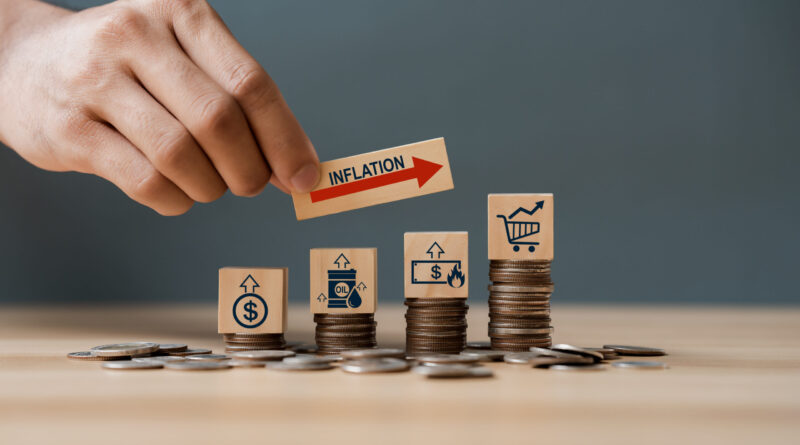Monetary Policy Changes and Inflation: Understanding the Connection
Introduction
Inflation is one of the most talked-about economic issues in the world today. It affects everything from the price of groceries to the cost of housing, and it directly impacts people’s daily lives. But inflation does not occur by itself — it is closely linked to the monetary policy of a country.
Monetary policy refers to the actions taken by a country’s central bank, such as the Federal Reserve in the U.S., the Reserve Bank of India, or the State Bank of Pakistan, to manage money supply, interest rates, and credit in the economy.
The connection between monetary policy and inflation is very important because it affects not only the economy but also individual households and businesses. In this article, we will explore:
-
What monetary policy is
-
What inflation is
-
How monetary policy affects inflation
-
Types of monetary policy changes
-
Examples and case studies
-
How it impacts everyday life
-
Conclusion
What is Monetary Policy?
Monetary policy is a tool used by central banks to control the supply of money and credit in the economy. The main goal is to maintain economic stability, encourage growth, and prevent excessive inflation or deflation.
There are two main types of monetary policy:
-
Expansionary Monetary Policy:
-
Used when the economy is slowing down.
-
The central bank lowers interest rates or increases money supply.
-
Goal: Encourage borrowing and spending to boost economic growth.
-
-
Contractionary Monetary Policy:
-
Used when the economy is growing too fast, and inflation is rising.
-
The central bank raises interest rates or reduces money supply.
-
Goal: Reduce spending and borrowing to slow inflation.
-
Other tools of monetary policy include:
-
Open Market Operations (buying or selling government bonds)
-
Reserve Requirements (how much banks must keep as reserve)
-
Discount Rate (interest rate charged to banks by central banks)
What is Inflation?
Inflation is the general rise in prices of goods and services over time. When inflation is high, the value of money decreases, which means the same amount of money buys fewer goods.
Inflation can occur due to several reasons:
-
Demand-Pull Inflation: When demand for goods and services is higher than supply, prices rise.
-
Cost-Push Inflation: When production costs (like wages, materials, or fuel) increase, businesses raise prices.
-
Built-in Inflation: When workers demand higher wages, which increases production costs and leads to higher prices.
Why Inflation Matters:
-
Reduces the purchasing power of money.
-
Makes it harder for families to afford daily necessities.
-
Can lead to higher interest rates and slow economic growth if uncontrolled.
How Monetary Policy Affects Inflation
Monetary policy is the primary tool to control inflation. Here’s how:
1. Interest Rate Changes
-
Raising interest rates: When the central bank increases rates, borrowing becomes more expensive.
-
Businesses borrow less for expansion.
-
Consumers borrow less for big purchases like houses and cars.
-
Result: Spending slows, reducing pressure on prices, which lowers inflation.
-
-
Lowering interest rates: When rates are cut, borrowing becomes cheaper.
-
Businesses and consumers spend more.
-
Result: Economic activity rises, which can sometimes increase inflation if demand grows too fast.
-
2. Money Supply Control
-
By controlling the amount of money in the economy, the central bank can influence inflation.
-
Too much money in the system leads to higher demand and higher prices (inflation).
-
Less money reduces demand, slowing inflation.
-
3. Credit Availability
-
By making it easier or harder for banks to lend money, monetary policy directly affects spending and investment.
-
Easier credit can stimulate economic growth but may also push prices up.
-
Tighter credit slows down spending and controls inflation.
Types of Monetary Policy Changes
1. Expansionary Policy
-
Objective: Increase economic activity.
-
Actions Taken:
-
Reduce interest rates
-
Buy government securities (increases money supply)
-
Lower reserve requirements for banks
-
-
Impact on Inflation: Can lead to higher inflation if the economy is already running near capacity.
2. Contractionary Policy
-
Objective: Control excessive inflation.
-
Actions Taken:
-
Raise interest rates
-
Sell government securities (reduces money supply)
-
Increase reserve requirements
-
-
Impact on Inflation: Slows down inflation by reducing spending and borrowing.
3. Neutral Policy
-
A balanced approach where the central bank tries to keep economic growth steady without causing high inflation.
Case Studies: Monetary Policy and Inflation
United States (2022–2023)
-
During this period, inflation reached levels not seen in decades.
-
The Federal Reserve responded by raising interest rates multiple times.
-
Result: Borrowing costs increased, slowing spending and helping to gradually control inflation.
India (2010–2012)
-
India faced high inflation due to rising food and fuel prices.
-
The Reserve Bank of India used contractionary monetary policy, raising interest rates.
-
Result: Inflation slowed, but growth also slightly decreased, showing the trade-off between growth and inflation control.
Pakistan (Recent Years)
-
Pakistan has faced rising inflation due to supply shortages and currency depreciation.
-
The State Bank of Pakistan raised interest rates and restricted money supply.
-
Result: Slowed inflation growth, but borrowing became more expensive for businesses and individuals.
How It Affects Daily Life
Monetary policy and inflation are not just abstract terms — they impact everyday people in many ways:
-
Loan Costs:
-
Higher interest rates mean more expensive home loans, car loans, and personal loans.
-
-
Savings:
-
When interest rates are high, banks pay more on savings, encouraging people to save rather than spend.
-
-
Prices of Goods:
-
Controlling inflation helps keep daily essentials like food, fuel, and clothing affordable.
-
-
Business Decisions:
-
High inflation makes businesses cautious about expanding or hiring new employees.
-
-
Investment Returns:
-
Investors need to consider inflation when evaluating returns. For example, a 5% return may not be enough if inflation is 7%.
-
Key Takeaways
-
Monetary policy is central to controlling inflation.
-
Raising interest rates slows inflation, while lowering them can increase spending and sometimes inflation.
-
Controlling money supply is crucial to prevent prices from rising too fast.
-
Every monetary decision has trade-offs — slowing inflation may also slow economic growth.
-
Individuals should be aware of how policy changes affect loans, savings, and investments.
Conclusion
The relationship between monetary policy and inflation is direct and powerful. Central banks play a critical role in ensuring that inflation does not spiral out of control while maintaining steady economic growth.
-
Expansionary monetary policy encourages growth but may raise inflation.
-
Contractionary monetary policy reduces inflation but can slow the economy.
-
Neutral policies try to balance growth and price stability.
For ordinary people, understanding this connection can help in managing personal finances, making informed decisions about loans, savings, and investments.
By following central bank announcements and understanding how monetary policy affects inflation, individuals can better protect their money and make smarter financial choices.
In short: Monetary policy and inflation are two sides of the same coin — one controls the flow of money, and the other shows how prices respond. Wise governments, businesses, and individuals watch these closely to maintain economic stability.

